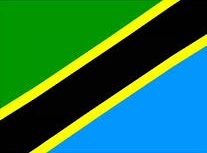
Authorities of the SPK Museum, Berlin’s Museum of Prehistory and Early History, have announced this week that they have been able to trace living relatives to ancient skulls pillaged by German forces in East Africa during the colonial era, using DNA analysis.

This is no easy fit, and the museum’s director has lauded it as a “small miracle.” Why? Well because from a study of at least 1,100 skulls found in the 7,700 skulls collection acquired from the Berlin’s Charité Hospital Museum, SPK museum researchers were able to gather enough information on 8 skulls to make a search for specific descendants. A complete genetic match was established between one of the skulls and a man still alive today. The clue: a single word inscribed on the skull “Akida,” who is believed to have been a high-ranking advisor to Mangi Meli, a ruler of the Chagga people in the 1890s in the Kilimanjaro Region of Tanzania. It is no secret the fate that this advisor must have found, given that Mangi Meli was hanged and decapitated by the Germans for leading an uprising against German invaders in 1900, along with 19 other Chagga, Meru, and Arusha leaders; one can only guess that the Akida must have been hanged with King Meli. This raises an important question: where are the skulls of Mangi Meli, and the other Chagga, Meru, and Arusha leaders? We all remember that King Mkwawa’s skull was part of the Treaty of Versailles’s negotiation; so it will be no surprise that other kings’ skulls are found somewhere in the basements of German museums.

The SPK collection is controversial because of its origins: at the end of the 19th century and the beginning of the 20th century, the German empire took thousands of skulls from its colonies for research into racial classification, many of the skulls were from colonial victims, and part of loots. I still have a hard time understanding why, as part of a loot, invaders will take skulls of the defeated, unless it is for more than just a racial study? A few years ago, the SPK returned 20 skulls to Namibia; those skulls were thought to belong the Nama and Herero tribes who suffered a genocide at the hands of Germans at the beginning of the 20th century (Germany Returns Skulls of Namibians Genocide Victims, the first genocide of the 20th century).
Excerpts below are from DW. Enjoy!
=====

A Berlin museum said on Tuesday it had established a clear link between three skulls taken to Germany during the colonial era and living relatives in Tanzania.
The German capital’s Museum of Prehistory and Early History carried out DNA analysis on hundreds of skulls with the aim of returning the remains to descendants.
Berlin’s SPK museum authority said in a statement that it was the first time that DNA research had provided a clear link between such remains and living descendants.
“The relatives and the government of Tanzania will now be informed as soon as possible,” the statement said.
… Museum researchers gathered enough information on eight of the skulls to make a search for specific descendants viable, the SPK said. Saliva samples were taken from possible descendants.
A complete genetic match for one of the skulls was found with a man still alive today.
The skull was marked with the title “Akida” which already indicated that it belonged to a known senior adviser to Mangi Meli (1866-1900), a powerful leader of the Chagga people.
…


I didn’t know Germany had the skulls of Tanzanians as well as the Namibians. This is just disgusting and I get more infuriated when I learn about this history I was never taught.
LikeLike
Yes… Ospreyshire, It is infuriating to learn about these. I still wonder why they kept the skulls of these people (and are still keeping them) and for so long, was it more of a winner’s trophy? It’s like wondering why France held onto Sarah Baartman’s genitals, skeleton, brain, and a plaster cast of her body after exposing those for 150 years, refusing to even give back until after Nelson Mandela departed from office.
It absolutely does not seem normal!
LikeLiked by 1 person